Turn your Selfies into Professional Business Headshots -
Create Your Headshot 👩🏻💼👨🏻💼
Looking for powerful VanceAI alternatives to elevate your image enhancement game? With technology evolving rapidly, finding the right tool to upscale your images without breaking the bank has never been more important. VanceAI has been a popular choice, especially for its image-upscaling capabilities. However, exploring other options can open up new possibilities that better fit your specific needs.
In this blog post, we’ll dive into a range of VanceAI alternatives that offer similar, if not enhanced, functionalities. Whether you're seeking an advanced Vance Ai alternative for bulk processing or a user-friendly Vanceai image upscaler that delivers stunning results with ease, we've got you covered. Our detailed guide will help you compare features, pricing, and performance to find the best fit for your image enhancement needs.
Join us as we explore these top alternatives and find the perfect solution to make your images stand out. From innovative technology to user-centric features, discover the tools that could redefine how you approach image upscaling.
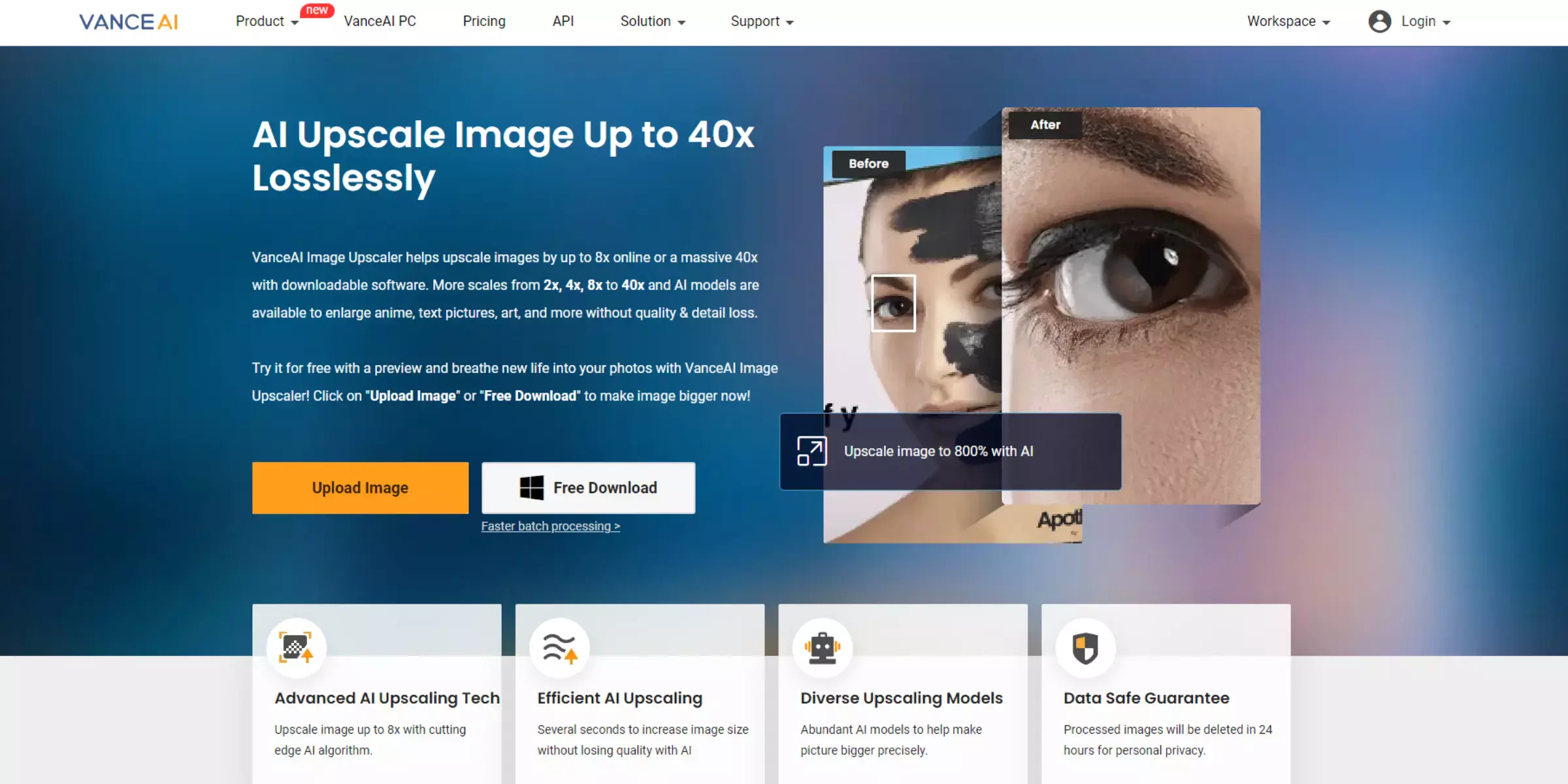
VanceAI is an innovative tool that uses artificial intelligence to enhance and upscale images. Designed for both professionals and casual users, it provides powerful features such as high-quality image upscaling, noise reduction, and detail enhancement.
With its advanced algorithms, VanceAI can significantly improve image resolution while preserving clarity and sharpness. It's particularly useful for those needing to enhance low-resolution images or create high-quality visuals for various applications, from marketing materials to personal projects.
VanceAI offers a user-friendly interface that simplifies complex image editing tasks, making it accessible even for those without technical expertise. Whether you're a photographer, designer, or simply someone looking to improve your images, VanceAI provides a comprehensive solution to achieve stunning results effortlessly.
Enhancing your photos has always been challenging with VanceAI, a cutting-edge tool designed to elevate image quality with precision. The VanceAI image upscaler leverages advanced artificial intelligence to transform your low-resolution images into high-definition masterpieces.
Whether you're working with JPEG, PNG, or other formats, VanceAI ensures that every detail is sharpened and enhanced. This intuitive tool is perfect for those seeking to upscale images for professional use or personal projects.
By simply uploading your photo, you can quickly achieve stunning results without the need for complex software. Experience effortless image enhancement and upscale your visuals to new heights with VanceAI.
Step 1: Visit the VanceAI website or app and click on the "Upload Image" button. Choose the image you want to enhance from your device.
Step 2: Once uploaded, select the desired enhancement features, such as upscaling or noise reduction. You can also adjust settings according to your preferences.
Step 3: Click on "Start Processing" and let VanceAI’s AI algorithms work their magic. This may take a few seconds to a few minutes, depending on the image size and selected options.
Step 4: After processing, preview the enhanced image. If satisfied, click "Download" to save it to your device.
VanceAI is a powerful image enhancement tool designed to elevate your photos with ease. Leveraging cutting-edge artificial intelligence, the VanceAI image upscaler transforms low-resolution images into high-definition visuals while maintaining sharpness and detail. Its user-friendly interface simplifies the process, allowing you to upload and enhance images in various formats, including JPEG and PNG.
With features like automatic noise reduction and batch processing, VanceAI streamlines your workflow, making it ideal for both personal and professional use. Experience effortless image upscaling and achieve stunning results with VanceAI’s advanced technology.
These features make VanceAI a powerful tool for anyone looking to enhance and upscale their images effortlessly.
VanceAI is a popular tool for image enhancement and upscaling, offering users advanced AI-driven solutions to improve their photo quality. While it provides many benefits, it's essential to weigh these against potential drawbacks to determine if it meets your needs.
In this overview, we’ll explore the key advantages and disadvantages of using VanceAI to help you make an informed decision about whether it’s the right tool for your image enhancement tasks.
Looking for top-notch alternatives to VanceAI to enhance and upscale your images? While VanceAI offers impressive features with its AI image upscaler, exploring other tools can uncover new functionalities and benefits that better suit your needs.
Whether you're seeking different pricing options, enhanced features, or unique capabilities, numerous VanceAI alternatives provide exceptional image enhancement solutions. These tools can deliver high-quality results and cater to various preferences, helping you achieve professional-grade visuals effortlessly.

Upscale.media is a leading AI-driven image enhancement tool designed to elevate your photos effortlessly. It offers advanced image upscaling capabilities, making it a compelling VanceAI alternative.
With Upscale.media, users can enhance image resolution while preserving sharpness and detail, thanks to its sophisticated algorithms. This tool supports various formats and is ideal for both personal and professional use, providing quick and high-quality results.
Its user-friendly interface ensures that enhancing images is straightforward, whether you're looking to upscale for marketing materials or personal projects. Experience superior image quality with Upscale.media's cutting-edge technology.
Step 1: Visit the Upscale.media website and upload your image by clicking the "Upload Image" button or using the drag-and-drop feature.

Step 2: Allow a few seconds for the AI-powered software to enhance and upscale your image.
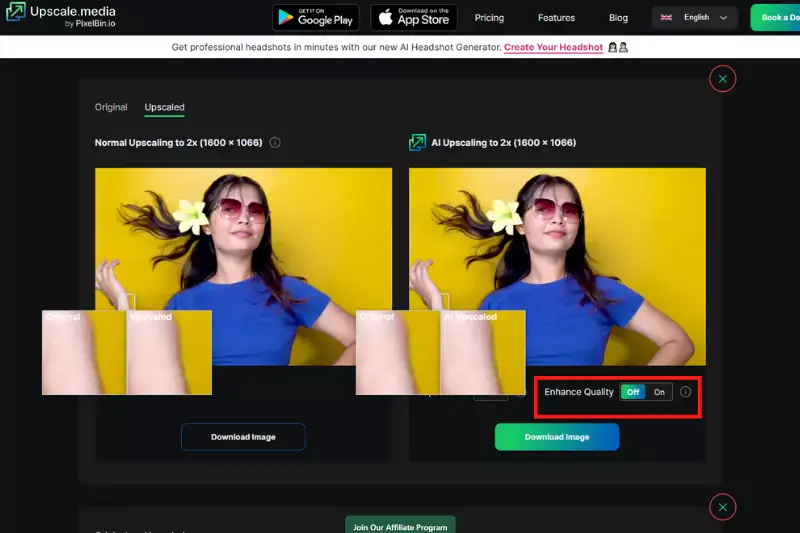
Step 3: Select from the available options, such as 2X or 4X upscaling, based on your needs.
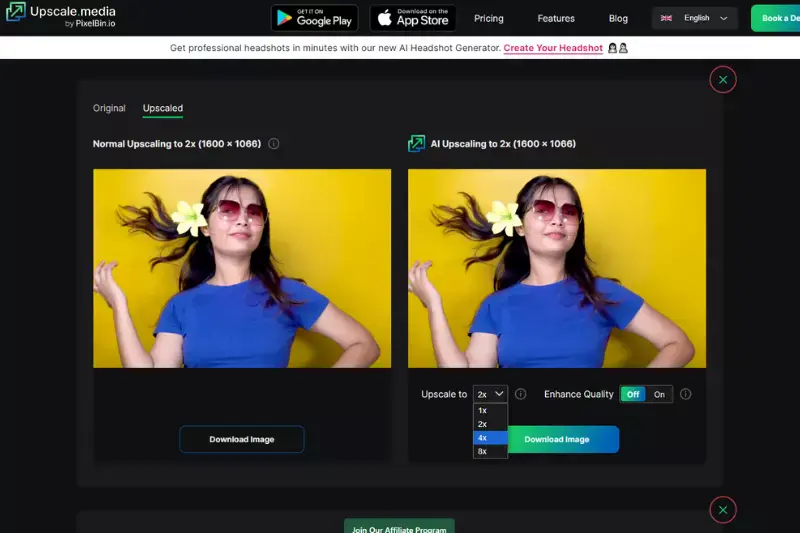
Step 4: Once the upscaling is complete, click the "Download Image" button to save the enhanced image to your device.

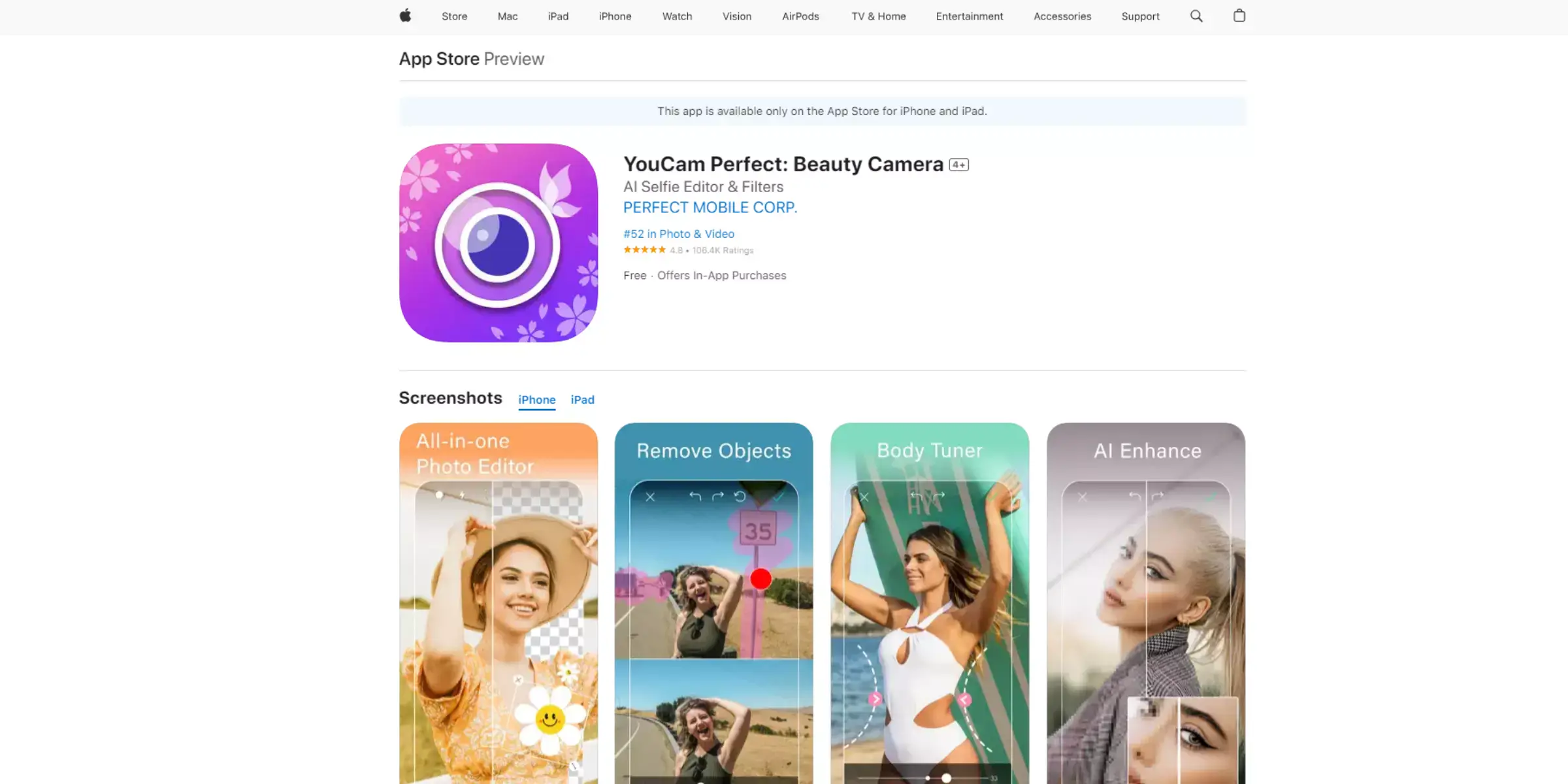
YouCam AI Photo Enhancer is a powerful tool designed to elevate your images with advanced AI technology. As a notable VanceAI alternative, it offers high-quality image upscaling and enhancement features that improve clarity and detail effortlessly.
The tool uses sophisticated algorithms to refine and enhance photos, making it ideal for both personal and professional use. With its user-friendly interface, YouCam AI allows for quick and easy image processing, ensuring stunning results with minimal effort.
Whether you need to upscale images for social media or professional projects, YouCam AI delivers exceptional quality and precision.

Remini is a cutting-edge photo enhancement tool that leverages AI technology to bring your images to life with stunning clarity. As a strong VanceAI alternative, Remini excels in upscale and restoration tasks, offering powerful features to improve image quality and resolution.
It utilises advanced algorithms to reduce noise, enhance details, and restore old or low-resolution photos, making them appear sharp and vibrant. With its intuitive interface, Remini ensures a seamless user experience, allowing for quick and effective image enhancements.
Ideal for both casual and professional use, Remini provides high-quality results that rival those of the VanceAI image more upscale.
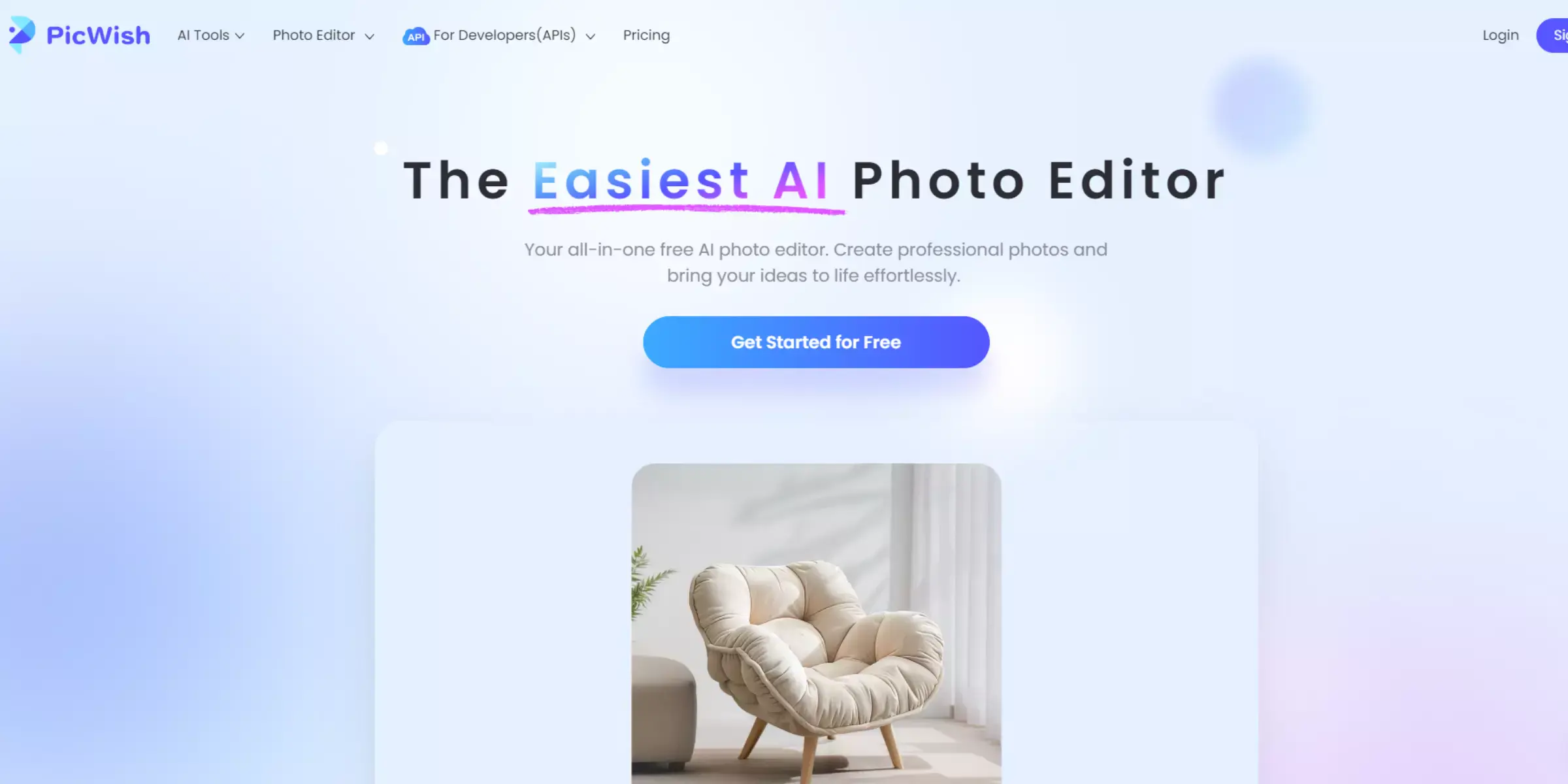
PicWish is an innovative AI-powered photo enhancer designed to elevate your images with ease. As a noteworthy VanceAI alternative, PicWish offers impressive upscaling and enhancement capabilities, transforming low-resolution photos into high-quality visuals.
Its advanced algorithms enhance image details, sharpen edges, and reduce noise, ensuring crisp and clear results. The user-friendly interface makes it simple to upload and process images, making PicWish ideal for both personal and professional use.
Whether you’re aiming to improve image quality for social media or professional projects, PicWish delivers exceptional performance that rivals the VanceAI image more upscale.
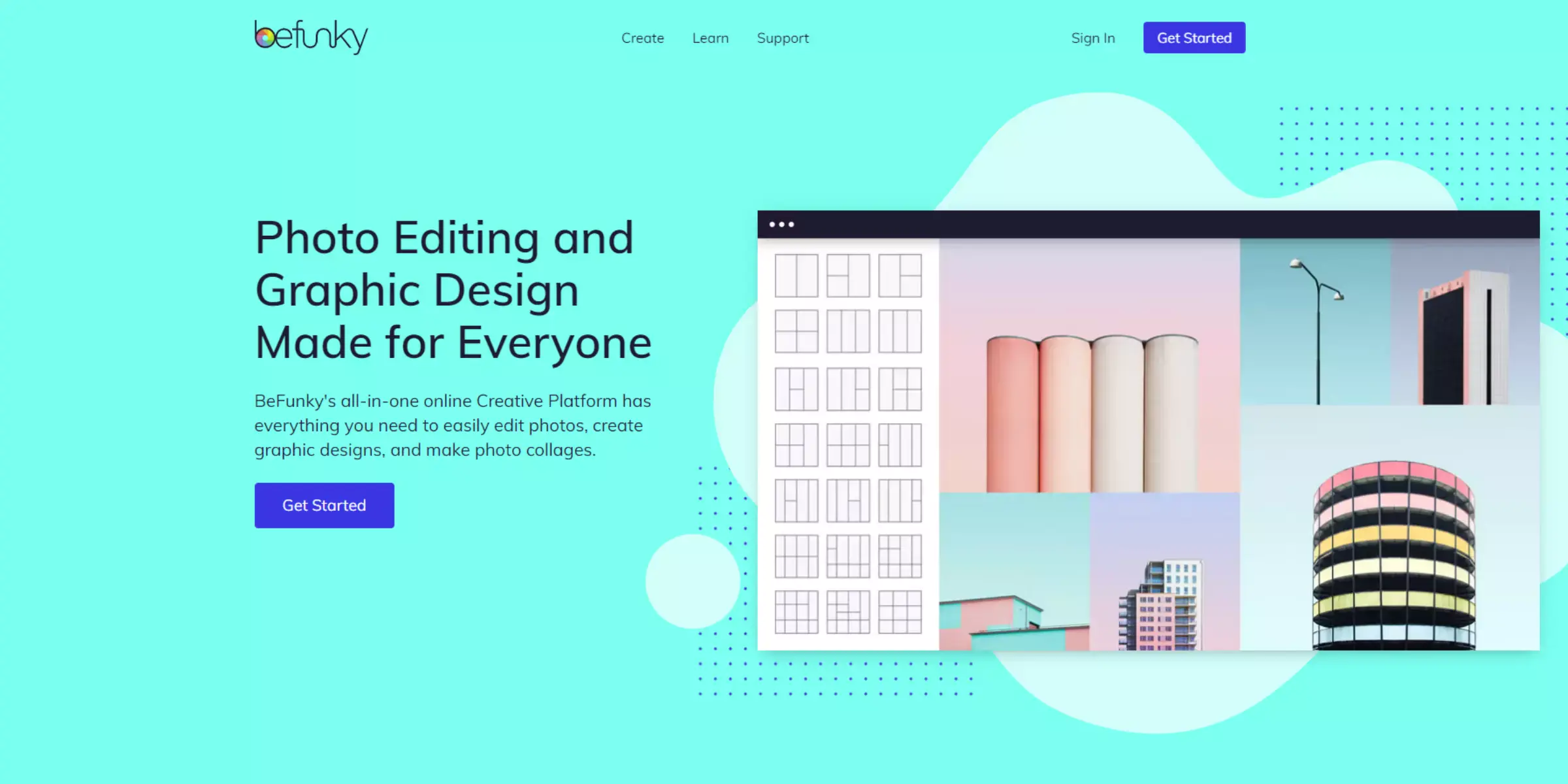
BeFunky is a versatile photo editing tool that combines ease of use with powerful AI-driven enhancements. As a strong VanceAI alternative, BeFunky offers robust image upscaling features, allowing users to improve photo resolution and clarity effortlessly.
Its advanced algorithms enhance details and reduce noise, ensuring high-quality results for both casual and professional projects. The intuitive interface simplifies the editing process, making it accessible to users of all skill levels.
Whether you're looking to refine images for social media or marketing materials, BeFunky provides exceptional image enhancement capabilities that compete closely with the VanceAI image more upscale.

Skylum is a dynamic photo editing software known for its advanced AI technology and user-friendly interface. As a significant VanceAI alternative, Skylum offers powerful image upscaling and enhancement features, delivering crisp, high-resolution results.
Its AI-driven tools automatically improve image quality by enhancing details, reducing noise, and refining sharpness. Skylum’s intuitive design makes it accessible for both beginners and professionals, allowing for seamless image adjustments and enhancements.
Whether you’re editing photos for personal use or professional projects, Skylum provides high-quality results that rival those of the VanceAI image more upscale.

AI Image Enlarger is a specialised tool designed to upscale and enhance your images using advanced artificial intelligence. As a notable VanceAI alternative, it offers exceptional image enlargement capabilities while preserving high quality and detail.
The tool utilises sophisticated algorithms to increase resolution, reduce noise, and sharpen image features, ensuring clear and vibrant results. With a user-friendly interface, AI Image Enlarger simplifies the enhancement process, making it ideal for both personal and professional needs.
Whether you need to upscale images for digital or print use, AI Image Enlarger provides reliable performance that competes with the VanceAI image upscaler.

Let's Enhance is a cutting-edge AI-powered tool designed to improve and upscale your images effortlessly. As a prominent VanceAI alternative, Let's Enhance excels in elevating image resolution while maintaining exceptional quality.
Utilising advanced algorithms, it enhances photo details, sharpens edges, and corrects colours, making it perfect for both personal and professional use. Its intuitive interface ensures that users of all skill levels can easily enhance their images.
Whether you're preparing visuals for marketing or personal projects, Let's Enhance offers high-quality results that rival the VanceAI image more upscale, ensuring your photos look their best.
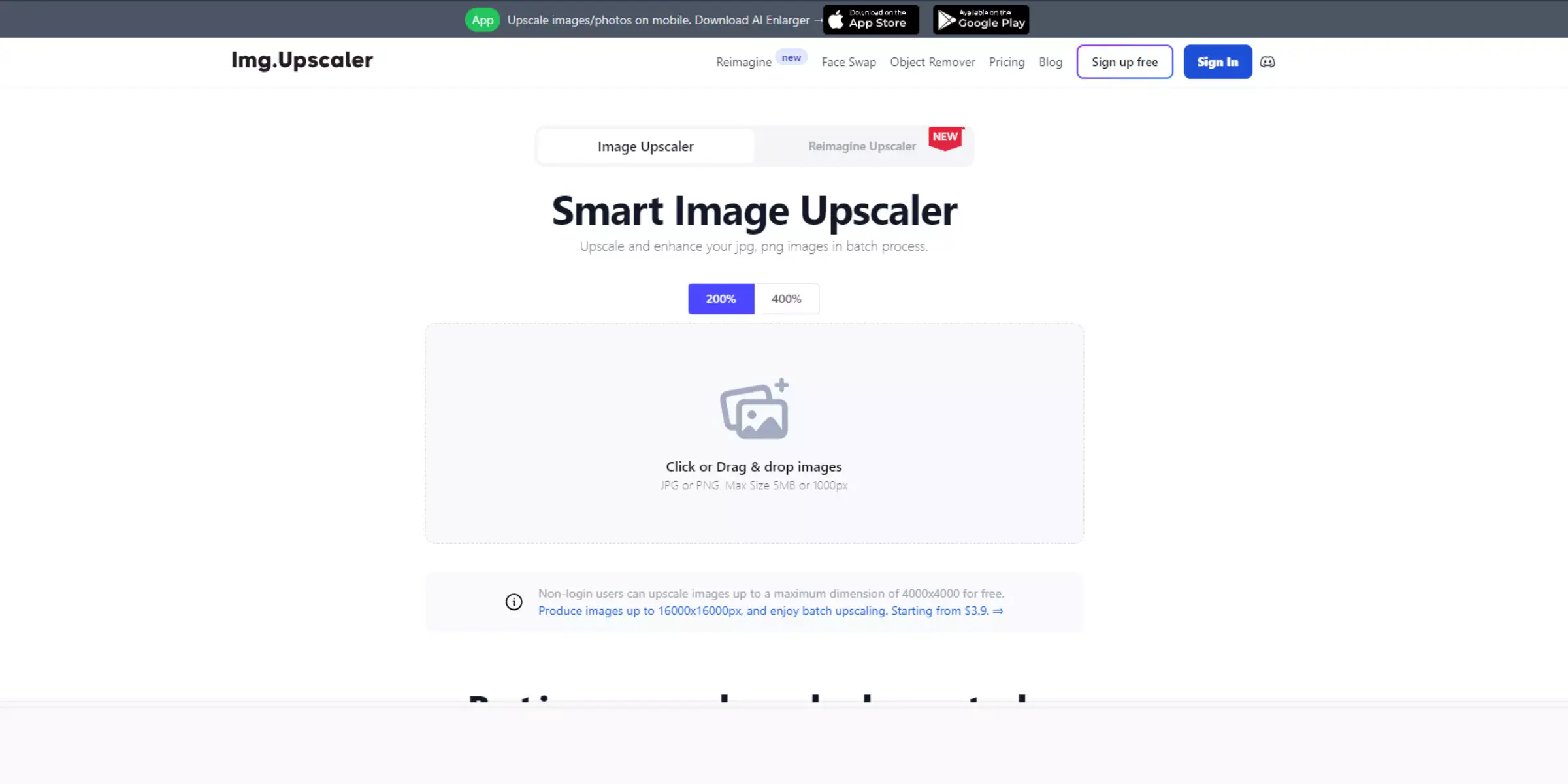
Imgupscaler is a robust AI-driven tool designed to enhance and enlarge your images with precision. As a noteworthy VanceAI alternative, Imgupscaler offers superior image upscaling capabilities, effectively increasing resolution while preserving clarity and detail.
The tool employs advanced algorithms to improve image quality, reduce noise, and sharpen features, ensuring high-definition results. With its straightforward interface, Imgupscaler is accessible to users of all experience levels, making it ideal for both personal and professional needs.
Whether you’re working on social media content or marketing materials, Imgupscaler provides reliable performance comparable to the VanceAI image upscaler.
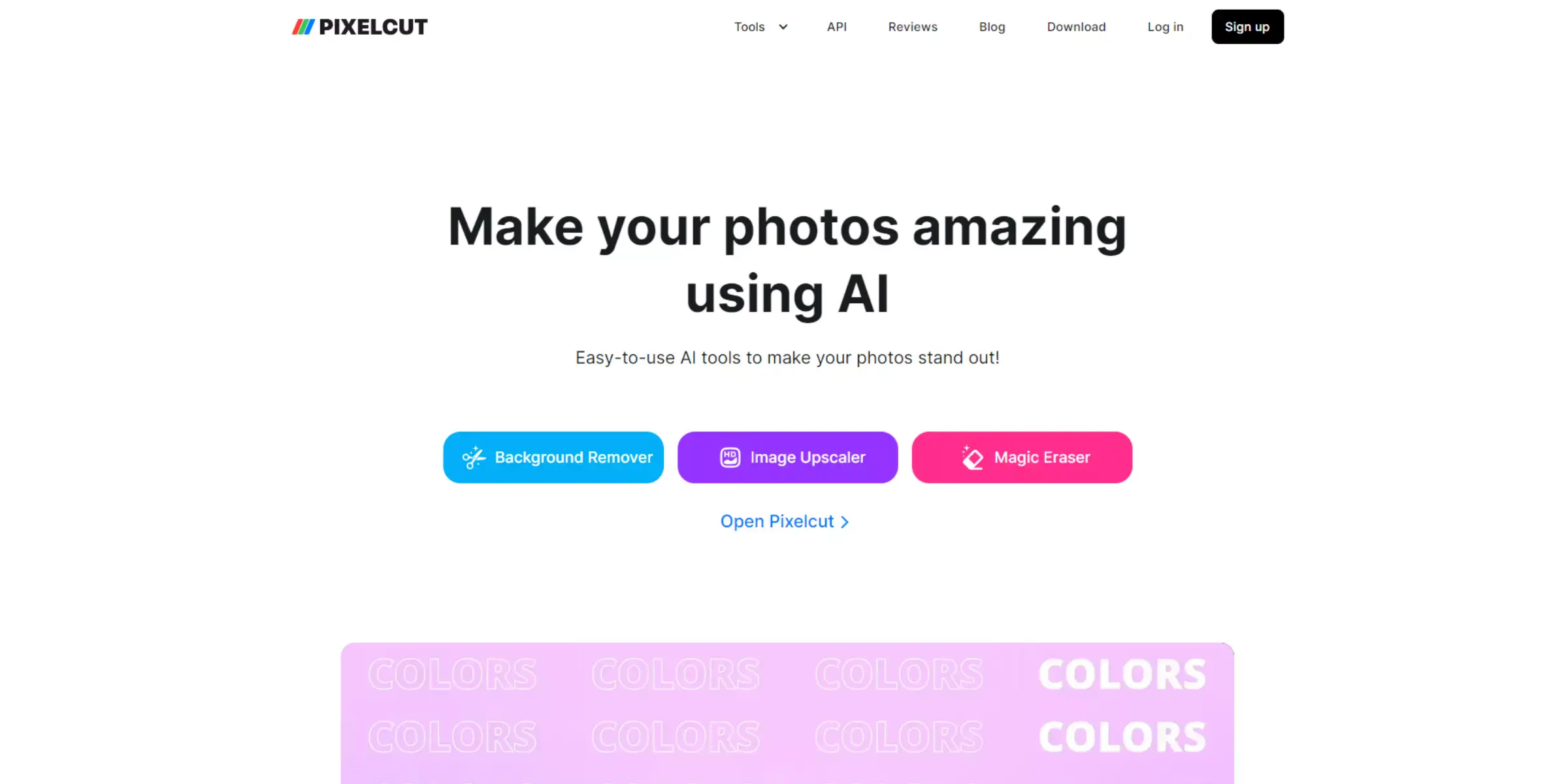
Pixelcut is a powerful AI-based tool designed to enhance and upscale your images with exceptional quality. As a notable VanceAI alternative, Pixelcut offers advanced upscaling features that significantly improve image resolution while maintaining sharpness and detail.
Its sophisticated algorithms enhance clarity and reduce noise, ensuring professional-grade results. The intuitive interface makes it easy for users of all skill levels to process images efficiently.
Whether you need to refine photos for digital use or high-resolution prints, Pixelcut delivers high-quality performance that competes closely with the VanceAI image more upscale, ensuring your visuals stand out.

Enhance.Pho.to is a versatile AI-powered tool designed to enhance and upscale your images with ease. As a reliable VanceAI alternative, Enhance.Pho.to offers impressive image upscaling capabilities that improve resolution and clarity while maintaining detail and sharpness.
The tool uses advanced algorithms to enhance image quality, reduce noise, and correct colours, ensuring vibrant and professional results. Its user-friendly interface allows for quick and straightforward image enhancements, making it suitable for both personal and professional applications.
Whether you need to refine photos for social media or print, Enhance.Pho.to provide high-quality performance comparable to the VanceAI image upscaler.
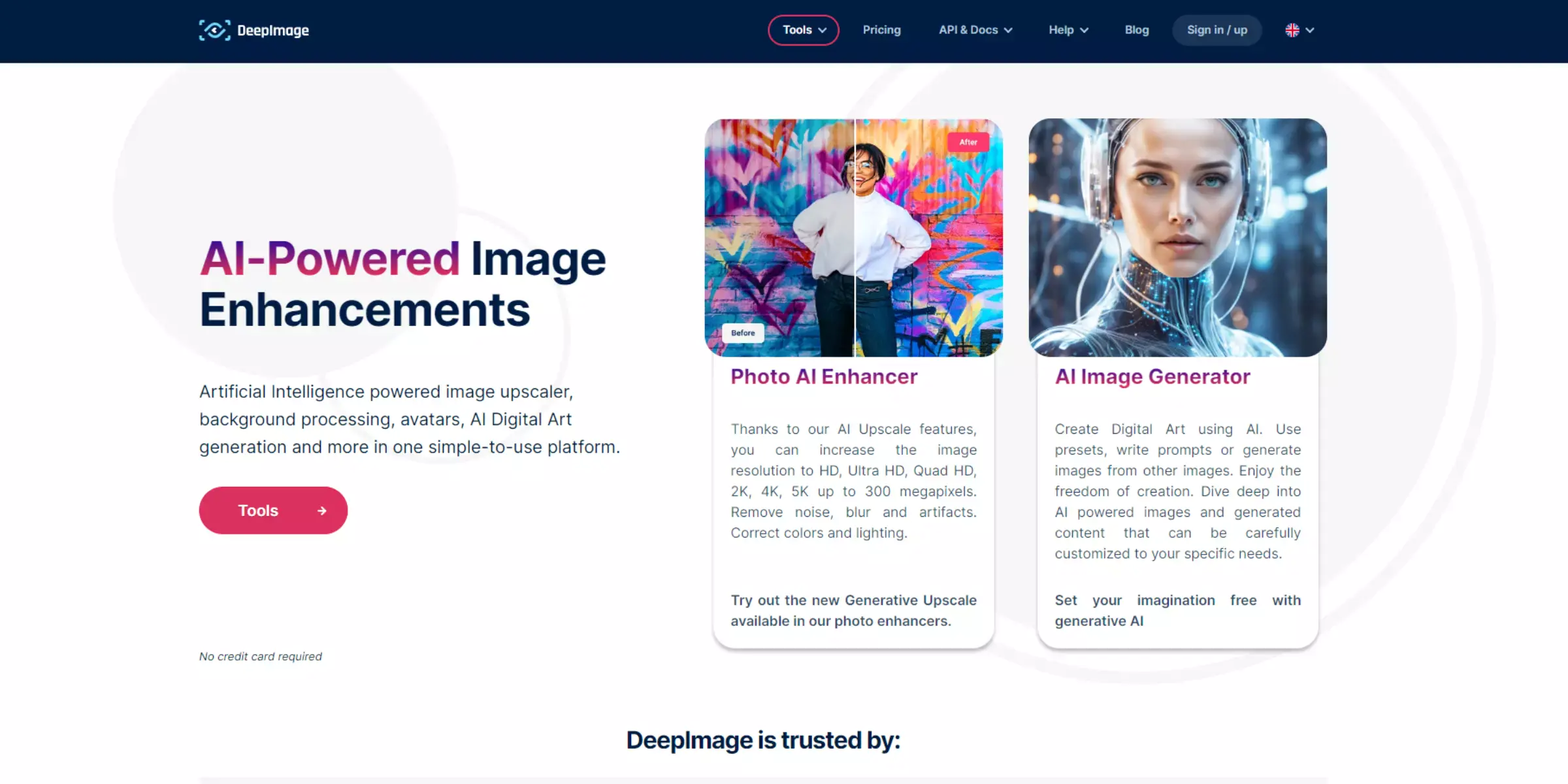
Deep Image is an advanced AI-powered tool designed to enhance and upscale your images with remarkable precision. As a strong VanceAI alternative, Deep Image excels in increasing resolution while preserving high levels of detail and clarity.
The tool utilises sophisticated algorithms to enhance photo quality, reduce noise, and refine sharpness, ensuring exceptional results. Its intuitive interface makes it easy for users of all skill levels to achieve professional-grade enhancements quickly.
Whether you're working on digital content or preparing images for print, Deep Image delivers high-quality performance that rivals the VanceAI image more upscale, elevating your visuals to new heights.
When searching for the best alternative to VanceAI, Upscale.media stands out as the top choice. This powerful tool offers exceptional AI-driven image upscaling and enhancement, making it a superior option for those seeking high-quality results.
Upscale.media excels in increasing resolution, sharpening details, and reducing noise, ensuring your images look crisp and professional. Its user-friendly interface and versatile features cater to both personal and commercial needs, providing a seamless enhancement experience.
With its robust performance and advanced technology, Upscale.media not only matches but often exceeds the capabilities of the VanceAI image upscaler, making it the ideal choice for all your image enhancement needs.
Exploring VanceAI alternatives opens up a world of powerful image enhancement tools. Each option offers unique features and capabilities, but tools like Upscale.media, Let's Enhance, and others provide exceptional upscaling and quality improvements.
Whether you’re looking for advanced AI technology or user-friendly interfaces, these alternatives offer robust solutions to elevate your image quality. Experiment with these tools to find the perfect fit for your needs and achieve stunning results effortlessly.
Upscale and enhance images resolution on the go with just a few clicks! Here is our curated selection of top file types for upscale.media.
What is the best image of Upscaler?
Sometimes, you just don’t have a photo that’s big enough for your needs. You need to scale up if you want to use a high-quality photo for print, for example, but if it’s only 300 dpi or smaller, you need to scale up.
The best image upscalers will help you do that. Some even work in video editing and image manipulation programs. Check out these top-rated tools for upscale. media and start scaling today.
What is the best AI photo enhancer?
Upscale.media is a new age photo enhancing program that uses artificial intelligence and neural networks to enhance photos automatically.
The application uses deep learning algorithms to process images, making it perfect for those looking to up their Instagram game.
Is Remini free?
Yes. It's an open-source chatbot, so it’s free to use.
Is Upscale.Media easy to use for beginners?
Yes, Upscale.Media has a user-friendly interface and provides easy-to-follow instructions for using its tools, making it suitable for beginners in image editing
What file types are supported by upscale.media?
Upscale.media supports a wide range of file types, including JPEG, PNG, and TIFF.
Are there any limitations to using upscale.media?
The only limitation to using upscale.media is the file size limit of 5 MB for free users. However, premium users can upload larger files and enjoy additional features.
You can upscale images of anything like objects, humans, or animals , and download them in any format for free.
With Upscale.media, you can easily remove the background of your images by using the Drag and Drop feature or click on “Upload.”
Upscale.media can be accessed on multiple platforms like Windows, Mac, iOS, and Android.
Upscale.media can be used for personal and professional use. Use tool for your collages, website projects, product photography, etc.
Upscale.media has an AI that processes your image accurately and upscales the image automatically upto 4X.
You won’t have to spend extra money or time on the purchase of expensive software to enhance your images.
Every week, we send you one article that will help you stay informed about the latest AI developments in Business, Product, and Design